Shows
 BirdNote DailyInternational Dawn Chorus DayThe first Sunday of May is International Dawn Chorus Day, a day to appreciate the beauty of birds’ dawn songs. Dawn Chorus Day began as a small event in Birmingham, England in the 1980s and has grown to be a worldwide celebration of birdsong. You can join in wherever you are by listening to the singers in your neighborhood – like this Eurasian Wren. Just make sure you get up nice and early!Today’s show brought to you by the Bobolink Foundation. More info and transcript at BirdNote.org.Want more BirdNote? Subscribe to our...2025-05-0301 min
BirdNote DailyInternational Dawn Chorus DayThe first Sunday of May is International Dawn Chorus Day, a day to appreciate the beauty of birds’ dawn songs. Dawn Chorus Day began as a small event in Birmingham, England in the 1980s and has grown to be a worldwide celebration of birdsong. You can join in wherever you are by listening to the singers in your neighborhood – like this Eurasian Wren. Just make sure you get up nice and early!Today’s show brought to you by the Bobolink Foundation. More info and transcript at BirdNote.org.Want more BirdNote? Subscribe to our...2025-05-0301 min BirdNote DailyThe Cactus Wren's Signature VoiceMost wrens in North America are small, furtive birds that stay deep in the vegetation. But the Cactus Wren is large, bold, and brassy. These wrens are well adapted to the desert and can get all the moisture they need from their food. Cactus Wren nests are a regular sight in their range of dry habitats from West Texas to California. The nest looks like a football made of twigs, stuck horizontally in a thorny tree or cholla cactus. It’s easily seen but well guarded by the spiky vegetation.More info and transcript at BirdNote.org. 2025-02-1801 min
BirdNote DailyThe Cactus Wren's Signature VoiceMost wrens in North America are small, furtive birds that stay deep in the vegetation. But the Cactus Wren is large, bold, and brassy. These wrens are well adapted to the desert and can get all the moisture they need from their food. Cactus Wren nests are a regular sight in their range of dry habitats from West Texas to California. The nest looks like a football made of twigs, stuck horizontally in a thorny tree or cholla cactus. It’s easily seen but well guarded by the spiky vegetation.More info and transcript at BirdNote.org. 2025-02-1801 min BirdNote DailyBirds Can Keep the BeatThe Scaly-breasted Wren lives in Central and South America, and has a lengthy song of whistled notes separated by pauses. By analyzing song recordings, researchers found that Scaly-breasted Wrens can precisely measure out pauses — even as they increase to several seconds. The findings suggest that the wrens have an internal metronome as accurate as a highly-trained musician playing a solo.Listen to this show in Spanish here.More info and transcript at BirdNote.org. Want more BirdNote? Subscribe to our weekly newsletter. Sign up for BirdNote+ to get ad-free listening and other perks. ...2024-12-1901 min
BirdNote DailyBirds Can Keep the BeatThe Scaly-breasted Wren lives in Central and South America, and has a lengthy song of whistled notes separated by pauses. By analyzing song recordings, researchers found that Scaly-breasted Wrens can precisely measure out pauses — even as they increase to several seconds. The findings suggest that the wrens have an internal metronome as accurate as a highly-trained musician playing a solo.Listen to this show in Spanish here.More info and transcript at BirdNote.org. Want more BirdNote? Subscribe to our weekly newsletter. Sign up for BirdNote+ to get ad-free listening and other perks. ...2024-12-1901 min BirdNote DailyStrange Places for a NestBirds are resourceful. Wherever they live, even in the biggest cities, they find clever places to build their nests. An initiative from the Cornell Lab of Ornithology called Celebrate Urban Birds once asked people to share the funkiest and funniest places they’ve seen a bird nest. Among the highlights were a family of robins set up shop in a coiled cable hung near a welding rig, a wren nest in an old car motor, and a tiny hummingbird nest perched precariously on an outdoor string lightbulb.More info and transcript at BirdNote.org. Want mor...2024-12-1201 min
BirdNote DailyStrange Places for a NestBirds are resourceful. Wherever they live, even in the biggest cities, they find clever places to build their nests. An initiative from the Cornell Lab of Ornithology called Celebrate Urban Birds once asked people to share the funkiest and funniest places they’ve seen a bird nest. Among the highlights were a family of robins set up shop in a coiled cable hung near a welding rig, a wren nest in an old car motor, and a tiny hummingbird nest perched precariously on an outdoor string lightbulb.More info and transcript at BirdNote.org. Want mor...2024-12-1201 min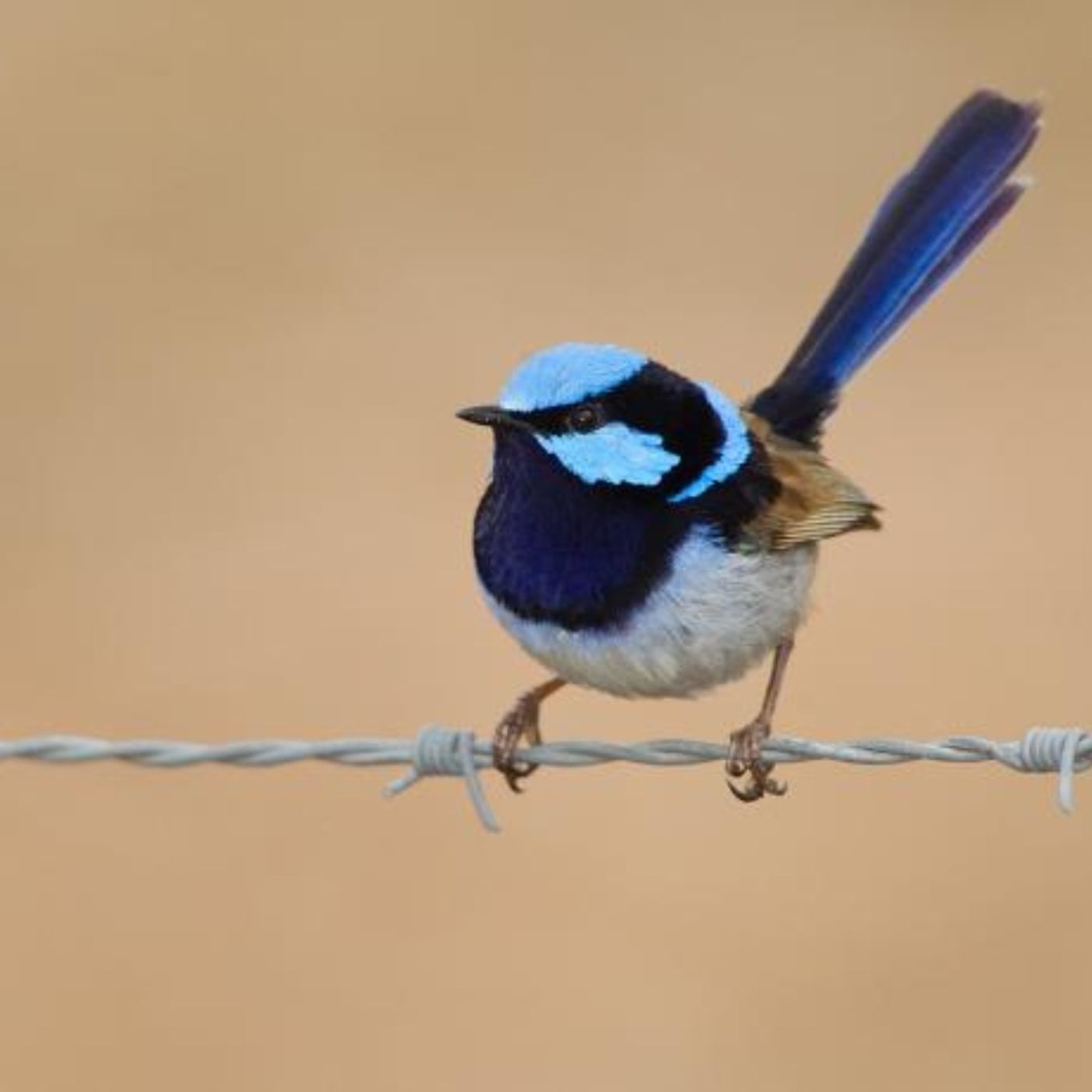 BirdNote DailyFairy-Wrens Sing Secret Passwords to Unborn ChicksSuperb Fairy-wrens teach their embryonic chicks a secret code. This incubation call contains a special note that will later serve as a password. When the chicks have hatched, this password enables the adult birds to identify their babies in the darkness of their domed nest. A species of Australian cuckoo lays its eggs in the wren’s nest, hoping to pawn off the task of parenting. But wren chicks learn their mother’s song and incorporate the password note into their begging calls.More info and transcript at BirdNote.org. Want more BirdNote? Subscribe to our w...2024-09-2601 min
BirdNote DailyFairy-Wrens Sing Secret Passwords to Unborn ChicksSuperb Fairy-wrens teach their embryonic chicks a secret code. This incubation call contains a special note that will later serve as a password. When the chicks have hatched, this password enables the adult birds to identify their babies in the darkness of their domed nest. A species of Australian cuckoo lays its eggs in the wren’s nest, hoping to pawn off the task of parenting. But wren chicks learn their mother’s song and incorporate the password note into their begging calls.More info and transcript at BirdNote.org. Want more BirdNote? Subscribe to our w...2024-09-2601 min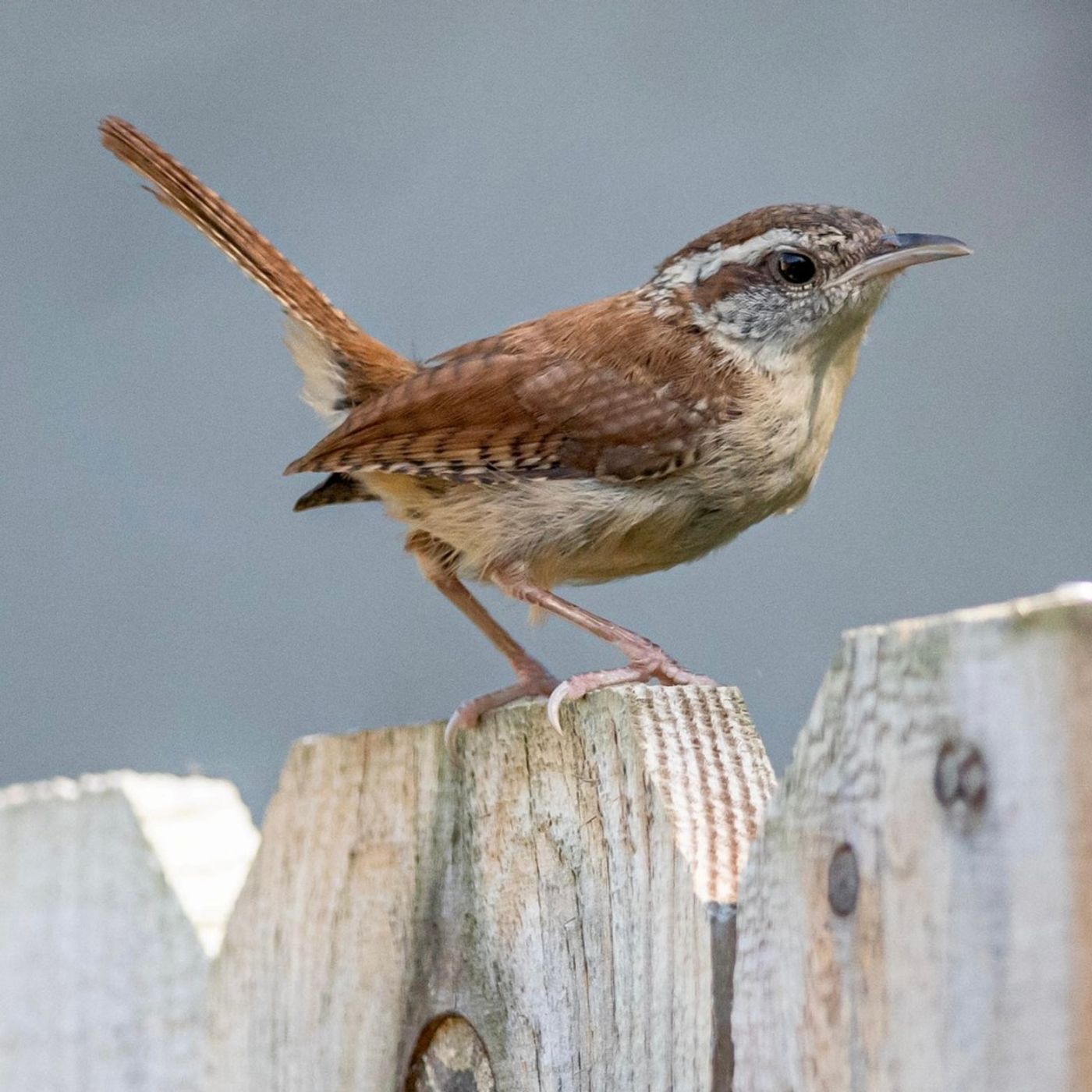 BirdNote DailyThe Crafty Carolina WrenThough half the size of a robin, the Carolina Wren has a powerful singing voice that seems to come from a much bigger bird. Many people remember their song with the phrase, “teakettle-teakettle-teakettle!” When these secretive birds venture into the open, look for their cocked tail, bright white eyebrows, tan breasts, and golden-brown backs. One reason these wrens thrive in cityscapes is their ability to build a nest in creative places: everything from an old boot to a window flower box to an engine block are potential places to raise their brood.More info and transcript at Bird...2024-08-0901 min
BirdNote DailyThe Crafty Carolina WrenThough half the size of a robin, the Carolina Wren has a powerful singing voice that seems to come from a much bigger bird. Many people remember their song with the phrase, “teakettle-teakettle-teakettle!” When these secretive birds venture into the open, look for their cocked tail, bright white eyebrows, tan breasts, and golden-brown backs. One reason these wrens thrive in cityscapes is their ability to build a nest in creative places: everything from an old boot to a window flower box to an engine block are potential places to raise their brood.More info and transcript at Bird...2024-08-0901 min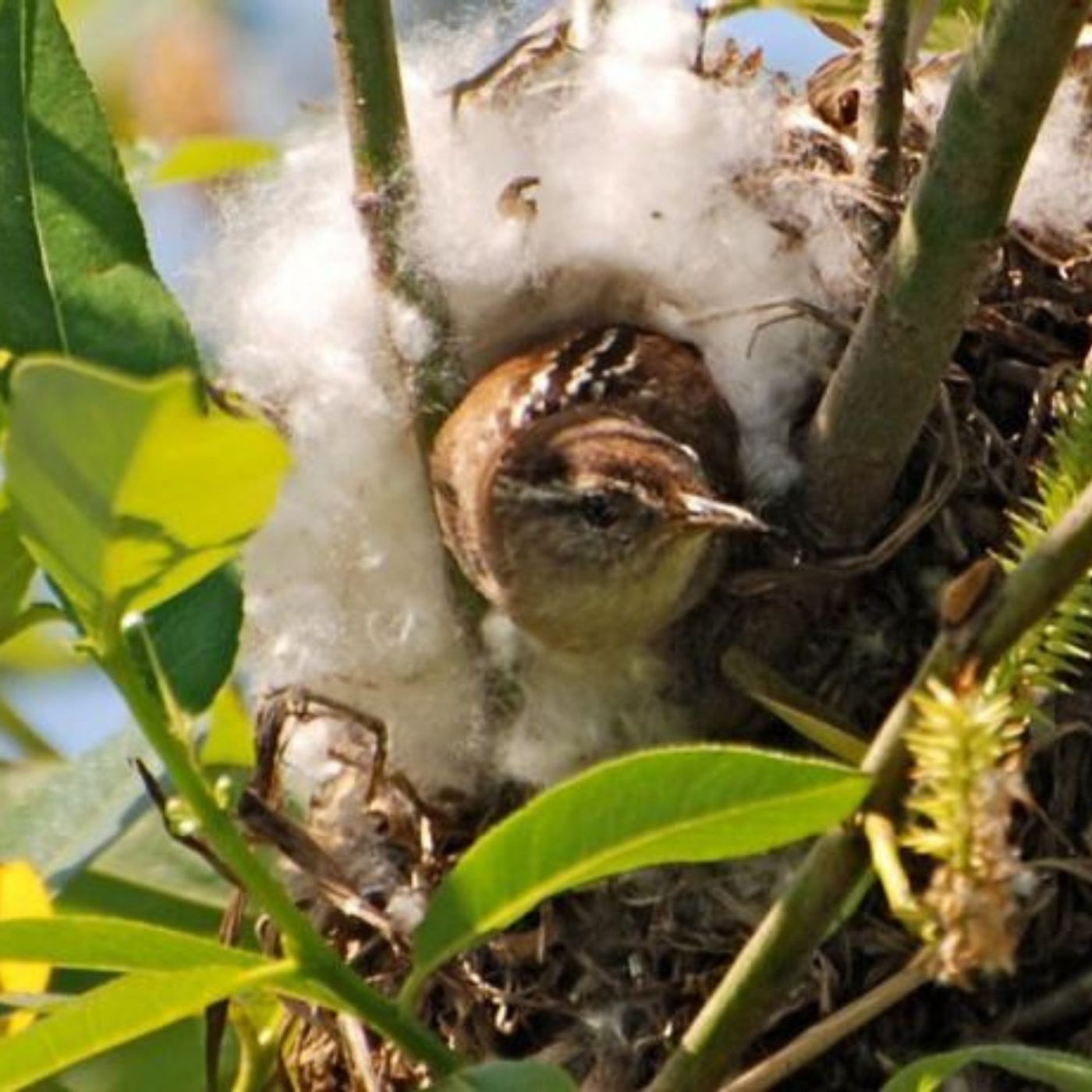 BirdNote DailyThe Marsh Wren's Many NestsTiny Marsh Wrens live in wetlands, usually within cattails, reeds, or bulrushes. After choosing his territory, the male weaves up to 15 dome-shaped shells, lashing together cattails, grasses, or reeds. These are called "courting" nests. Then, sitting high atop a perch in the marsh, he sings, inviting a female to select a nest in his territory. once the female has chosen one of his shells, she lines it with cattail down, feathers, leaves, or grass and lays her eggs. Sometimes a second female chooses a nest on the opposite end of his territory.More info and transcript at...2024-07-0401 min
BirdNote DailyThe Marsh Wren's Many NestsTiny Marsh Wrens live in wetlands, usually within cattails, reeds, or bulrushes. After choosing his territory, the male weaves up to 15 dome-shaped shells, lashing together cattails, grasses, or reeds. These are called "courting" nests. Then, sitting high atop a perch in the marsh, he sings, inviting a female to select a nest in his territory. once the female has chosen one of his shells, she lines it with cattail down, feathers, leaves, or grass and lays her eggs. Sometimes a second female chooses a nest on the opposite end of his territory.More info and transcript at...2024-07-0401 min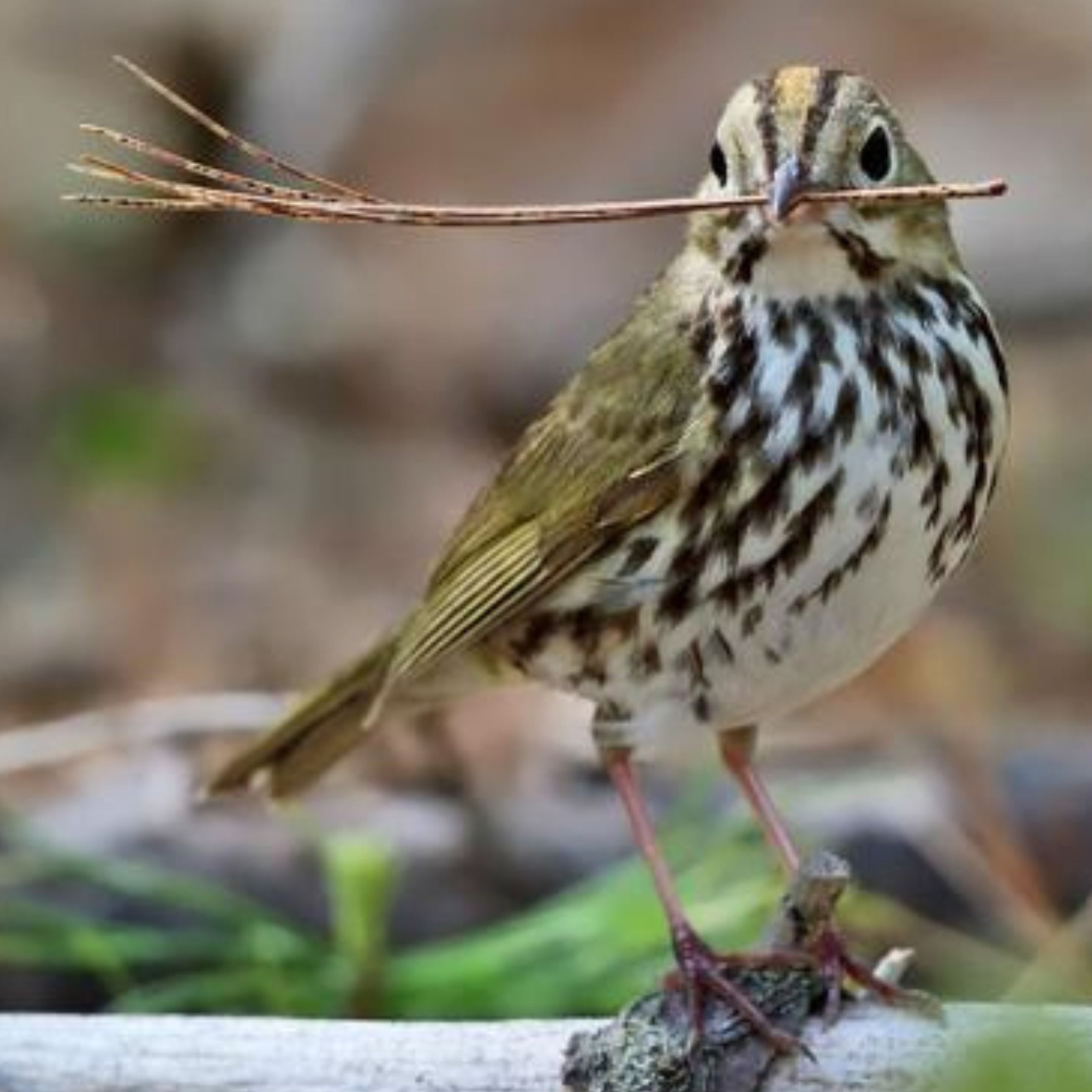 BirdNote DailySpring Birds Arrive in the Eastern ForestMay in an Eastern hardwood forest, and the chorus of spring birdsong is nearing its peak. The Carolina Wren, a year-round resident, has been singing since the end of winter. The resounding notes of this Ovenbird let us know it has returned safely from Belize, after a long flight across the Gulf of Mexico. A Chestnut-sided Warbler joins in, having returned from winter in Costa Rica, to the same patch of woods in which it nested last year. By late May, the last of the migrants has arrived from the tropics.More info and transcript at BirdNote...2024-05-0201 min
BirdNote DailySpring Birds Arrive in the Eastern ForestMay in an Eastern hardwood forest, and the chorus of spring birdsong is nearing its peak. The Carolina Wren, a year-round resident, has been singing since the end of winter. The resounding notes of this Ovenbird let us know it has returned safely from Belize, after a long flight across the Gulf of Mexico. A Chestnut-sided Warbler joins in, having returned from winter in Costa Rica, to the same patch of woods in which it nested last year. By late May, the last of the migrants has arrived from the tropics.More info and transcript at BirdNote...2024-05-0201 min BirdNote DailyCactus Wren Nest OrientationCactus Wrens, which may nest several times between March and September, carefully orient their nests in tune with the season. These bulky twig structures have a side entrance that curves toward the inner chamber. When building a nest for the hot months, the wren faces the opening to receive the afternoon breeze. By contrast, a Cactus Wren building a nest in early March orients the entrance away from the cold winds of that season, keeping the chicks snug and warm.More info and transcript at BirdNote.org. Want more BirdNote? Subscribe to our weekly newsletter. S...2024-04-2501 min
BirdNote DailyCactus Wren Nest OrientationCactus Wrens, which may nest several times between March and September, carefully orient their nests in tune with the season. These bulky twig structures have a side entrance that curves toward the inner chamber. When building a nest for the hot months, the wren faces the opening to receive the afternoon breeze. By contrast, a Cactus Wren building a nest in early March orients the entrance away from the cold winds of that season, keeping the chicks snug and warm.More info and transcript at BirdNote.org. Want more BirdNote? Subscribe to our weekly newsletter. S...2024-04-2501 min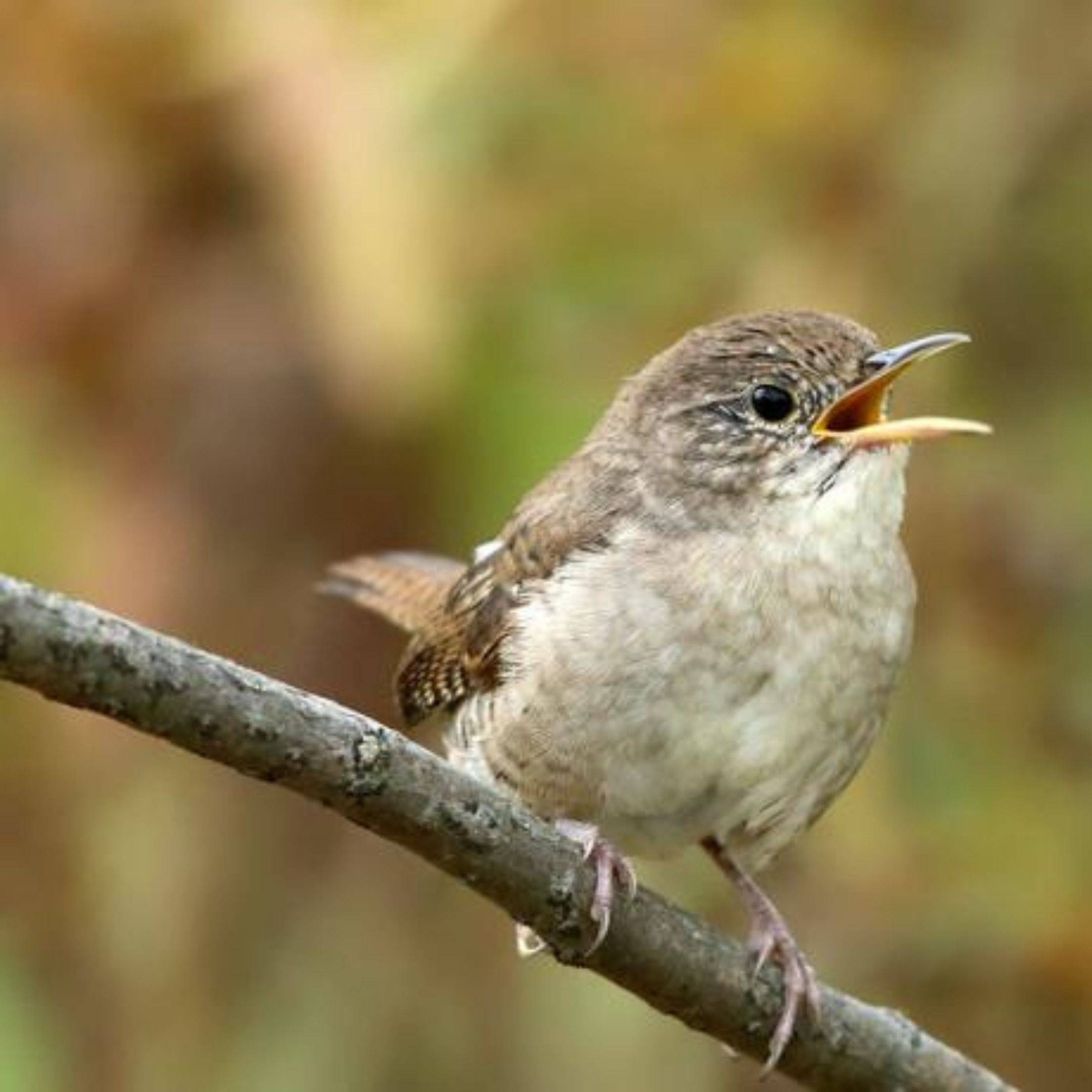 BirdNote DailyHouse Wren – Little Brown DynamoHouse Wrens dart from perch to perch and sing almost nonstop. They’re one of the most thoroughly studied songbird species. House Wrens nest in cavities, including backyard nest boxes. Most migrate south in late summer. The male House Wren sometimes builds multiple nests, allowing his mate to choose her favorite and put her finishing touches on it.More info and transcript at BirdNote.org. Want more BirdNote? Subscribe to our weekly newsletter. Sign up for BirdNote+ to get ad-free listening and other perks. BirdNote is a nonprofit. Your tax-deductible gift makes these show...2024-04-0701 min
BirdNote DailyHouse Wren – Little Brown DynamoHouse Wrens dart from perch to perch and sing almost nonstop. They’re one of the most thoroughly studied songbird species. House Wrens nest in cavities, including backyard nest boxes. Most migrate south in late summer. The male House Wren sometimes builds multiple nests, allowing his mate to choose her favorite and put her finishing touches on it.More info and transcript at BirdNote.org. Want more BirdNote? Subscribe to our weekly newsletter. Sign up for BirdNote+ to get ad-free listening and other perks. BirdNote is a nonprofit. Your tax-deductible gift makes these show...2024-04-0701 min BirdNote DailyFairy-Wrens - To Duel or Duet?The Red-backed Fairy-Wren, a tiny songbird living the Australian scrublands, is highly territorial and promiscuous. The male can’t be sure the eggs in his nest are his own. One way to help avoid this problem? The male may rough up a rival who approaches his territory. But research shows when Red-backed Fairy-Wren pairs sing a duet in order to deter rival males from intruding on their territory, those pairs had more of their own genetic offspring in their nests. For the male, aggression might not ensure paternity, but singing a duet could.More info and transcript at...2023-11-1901 min
BirdNote DailyFairy-Wrens - To Duel or Duet?The Red-backed Fairy-Wren, a tiny songbird living the Australian scrublands, is highly territorial and promiscuous. The male can’t be sure the eggs in his nest are his own. One way to help avoid this problem? The male may rough up a rival who approaches his territory. But research shows when Red-backed Fairy-Wren pairs sing a duet in order to deter rival males from intruding on their territory, those pairs had more of their own genetic offspring in their nests. For the male, aggression might not ensure paternity, but singing a duet could.More info and transcript at...2023-11-1901 min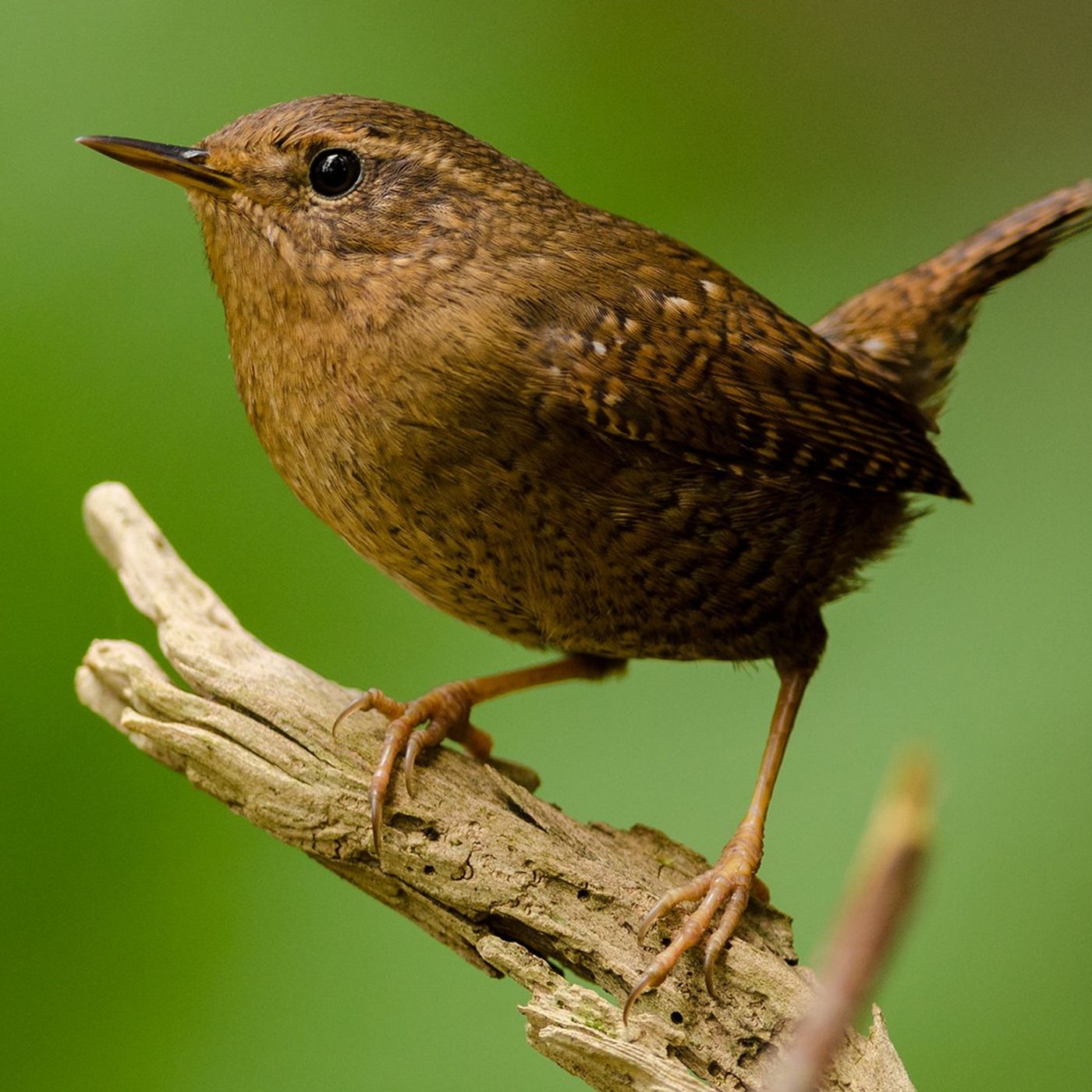 BirdNote DailyWhat the Pacific Wren HearsWhat does the Pacific Wren hear in a song? It's a long story. What we hear as a blur of sound, the bird hears as a precise sequence of sounds, the visual equivalent of seeing a movie as a series of still pictures. That birds can hear the fine structure of song so acutely allows them to convey much information in a short sound. Pacific Wrens are found most often in closed-canopy conifer forests, nesting in cavities, usually within six feet of the ground.More info and transcript at BirdNote.org. Want more BirdNote? Subscribe t...2023-11-0501 min
BirdNote DailyWhat the Pacific Wren HearsWhat does the Pacific Wren hear in a song? It's a long story. What we hear as a blur of sound, the bird hears as a precise sequence of sounds, the visual equivalent of seeing a movie as a series of still pictures. That birds can hear the fine structure of song so acutely allows them to convey much information in a short sound. Pacific Wrens are found most often in closed-canopy conifer forests, nesting in cavities, usually within six feet of the ground.More info and transcript at BirdNote.org. Want more BirdNote? Subscribe t...2023-11-0501 min BirdNote DailyWhere Do Fledglings Go?By late summer, most birds hatched in spring are on their own, without help from their parents. Where do they go? Young migratory birds will head south in late summer or fall, in the pattern of their species. But most non-migratory birds born last spring — such as this immature Bewick’s Wren — will need to find an unoccupied territory. So they disperse more widely than the established adults. Newly fledged Bald Eagles embark on a nomadic life. Sometimes they fly hundreds of miles in a day, a journey that may take them across the continent. More info and tra...2023-08-2601 min
BirdNote DailyWhere Do Fledglings Go?By late summer, most birds hatched in spring are on their own, without help from their parents. Where do they go? Young migratory birds will head south in late summer or fall, in the pattern of their species. But most non-migratory birds born last spring — such as this immature Bewick’s Wren — will need to find an unoccupied territory. So they disperse more widely than the established adults. Newly fledged Bald Eagles embark on a nomadic life. Sometimes they fly hundreds of miles in a day, a journey that may take them across the continent. More info and tra...2023-08-2601 min BirdNote DailyNest Boxes Help Bring Birds BackWherever you live, chances are a sweet-singing, cavity-nesting bird would be happy to perform in your yard — and it might stick around if you offer it a cozy nest box, like the one this Carolina Wren enjoys. Natural cavities, like old woodpecker holes, are often in short supply. So putting up a box in the right place — and that’s the right size to accommodate them — is truly an act of stewardship.More info and transcript at BirdNote.org. Want more BirdNote? Subscribe to our weekly newsletter. Sign up for BirdNote+ to get ad-free listening and other...2023-07-2201 min
BirdNote DailyNest Boxes Help Bring Birds BackWherever you live, chances are a sweet-singing, cavity-nesting bird would be happy to perform in your yard — and it might stick around if you offer it a cozy nest box, like the one this Carolina Wren enjoys. Natural cavities, like old woodpecker holes, are often in short supply. So putting up a box in the right place — and that’s the right size to accommodate them — is truly an act of stewardship.More info and transcript at BirdNote.org. Want more BirdNote? Subscribe to our weekly newsletter. Sign up for BirdNote+ to get ad-free listening and other...2023-07-2201 min BirdNote DailyHouse Wrens and Dummy NestsThere may be no busier bird during the nesting season than a male House Wren. Just a day or so after completing his spring migration from the tropics, the male House Wren claims a territory and checks out several potential nest cavities. And in each of these locations, he builds a starter nest using virtually anything twig-like to get the job done — from nails and bits of wire to paper clips and hairpins. The male House Wren stays at it until a female pairs with him. Then she picks one of the starter nests and takes over construction. M...2023-04-2001 min
BirdNote DailyHouse Wrens and Dummy NestsThere may be no busier bird during the nesting season than a male House Wren. Just a day or so after completing his spring migration from the tropics, the male House Wren claims a territory and checks out several potential nest cavities. And in each of these locations, he builds a starter nest using virtually anything twig-like to get the job done — from nails and bits of wire to paper clips and hairpins. The male House Wren stays at it until a female pairs with him. Then she picks one of the starter nests and takes over construction. M...2023-04-2001 min BirdNote DailySpring Rain Refreshes a DesertSpringtime in the Anza-Borrego Desert State Park in southeastern California. Cacti and wildflowers glisten with raindrops, and birds begin to sing. A House Finch, a Bewick's Wren, a Cactus Wren, a Mourning Dove, and this Costa's Hummingbird all add their sounds.More info and transcript at BirdNote.org. Want more BirdNote? Subscribe to our weekly newsletter. Sign up for BirdNote+ to get ad-free listening and other perks. BirdNote is a nonprofit. Your tax-deductible gift makes these shows possible.
2023-04-0101 min
BirdNote DailySpring Rain Refreshes a DesertSpringtime in the Anza-Borrego Desert State Park in southeastern California. Cacti and wildflowers glisten with raindrops, and birds begin to sing. A House Finch, a Bewick's Wren, a Cactus Wren, a Mourning Dove, and this Costa's Hummingbird all add their sounds.More info and transcript at BirdNote.org. Want more BirdNote? Subscribe to our weekly newsletter. Sign up for BirdNote+ to get ad-free listening and other perks. BirdNote is a nonprofit. Your tax-deductible gift makes these shows possible.
2023-04-0101 min BirdNote DailyThe Cactus Wren’s Signature VoiceMost wrens in North America are small, furtive birds that stay deep in the vegetation. But the Cactus Wren is large, bold, and brassy. These wrens are well adapted to the desert and can get all the moisture they need from their food. Cactus Wren nests are a regular sight in their range of dry habitats from West Texas to California. The nest looks like a football made of twigs, stuck horizontally in a thorny tree or cholla cactus. It’s easily seen but well guarded by the spiky vegetation.More info and transcript at BirdNote.org. 2023-02-1701 min
BirdNote DailyThe Cactus Wren’s Signature VoiceMost wrens in North America are small, furtive birds that stay deep in the vegetation. But the Cactus Wren is large, bold, and brassy. These wrens are well adapted to the desert and can get all the moisture they need from their food. Cactus Wren nests are a regular sight in their range of dry habitats from West Texas to California. The nest looks like a football made of twigs, stuck horizontally in a thorny tree or cholla cactus. It’s easily seen but well guarded by the spiky vegetation.More info and transcript at BirdNote.org. 2023-02-1701 min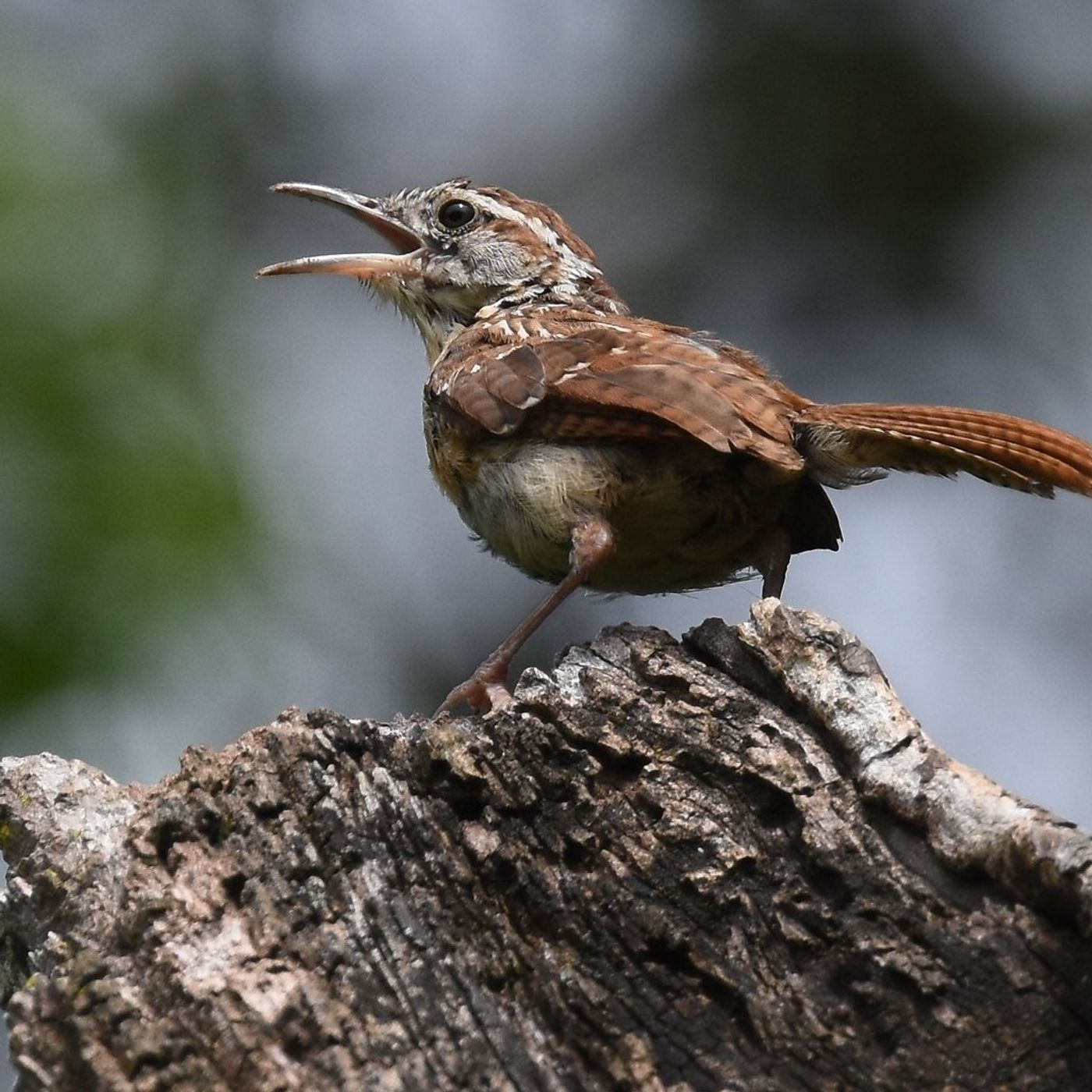 BirdNote DailyVoices and Vocabularies - How Birds Sing So LoudlyWhen a Carolina Wren like this one sings, something remarkable happens. These birds can sing so loudly that you almost have to shout to be heard over their songs!How can a bird like a Carolina Wren – at just 5½ inches long and weighing only as much as four nickels – produce so much sound? The answer lies in the songbird’s vocal anatomy. More info and transcript at BirdNote.org. Want more BirdNote? Subscribe to our weekly newsletter. Sign up for BirdNote+ to get ad-free listening and other perks. BirdNote is a nonprofit...2023-02-0201 min
BirdNote DailyVoices and Vocabularies - How Birds Sing So LoudlyWhen a Carolina Wren like this one sings, something remarkable happens. These birds can sing so loudly that you almost have to shout to be heard over their songs!How can a bird like a Carolina Wren – at just 5½ inches long and weighing only as much as four nickels – produce so much sound? The answer lies in the songbird’s vocal anatomy. More info and transcript at BirdNote.org. Want more BirdNote? Subscribe to our weekly newsletter. Sign up for BirdNote+ to get ad-free listening and other perks. BirdNote is a nonprofit...2023-02-0201 min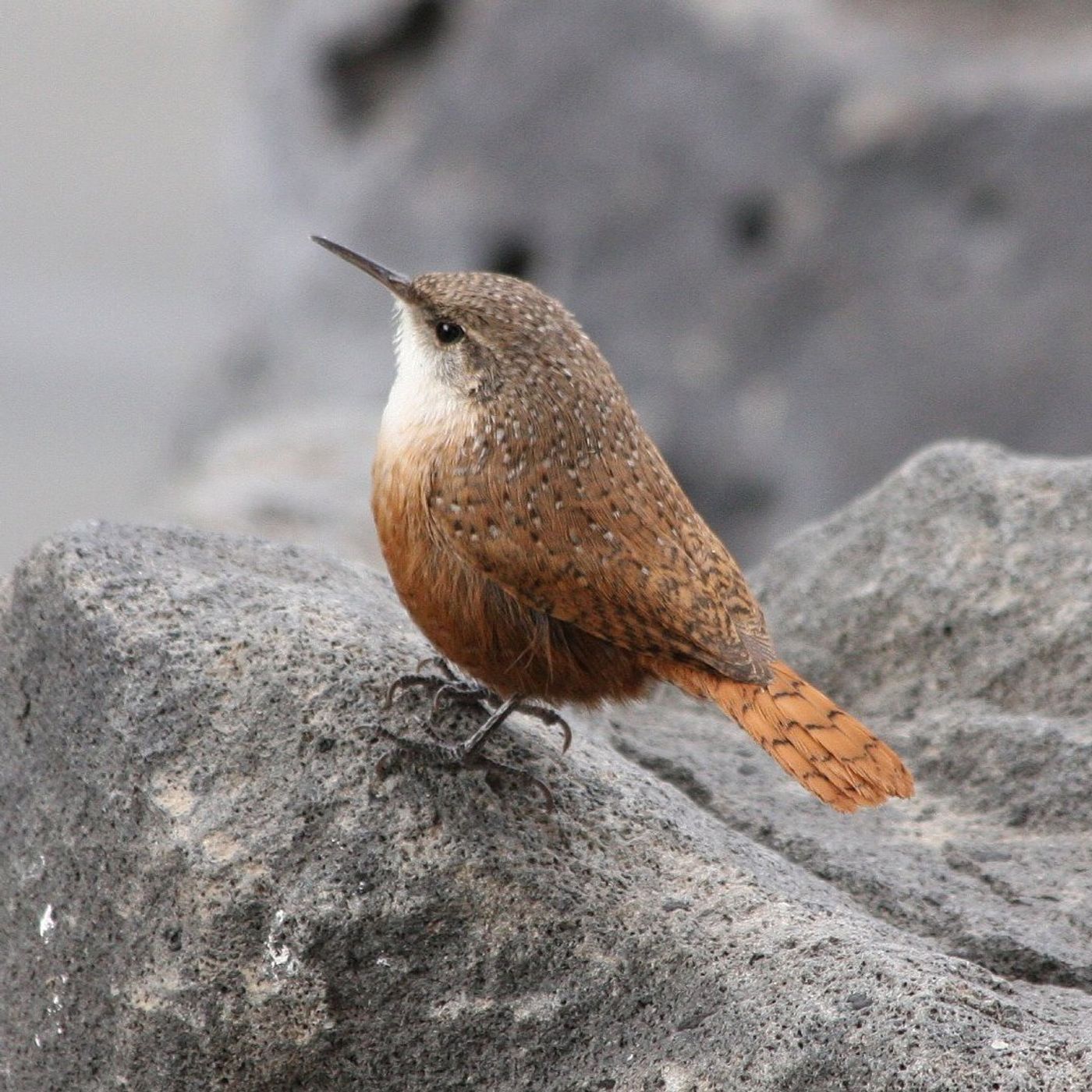 BirdNote DailyThe Song of the Canyon WrenThe Canyon Wren makes its home on the steep rocky outcrops and vertical stone cliffs of the coulees and mesas of the West. The birds are found from Mexico all the way through southern British Columbia. They live among the rocks all year long, nesting in rock piles and beneath overhangs, their songs bouncing off the sheer rock faces.More info and transcript at BirdNote.org. Want more BirdNote? Subscribe to our weekly newsletter. Sign up for BirdNote+ to get ad-free listening and other perks. BirdNote is a nonprofit. Your tax-deductible gift makes th...2023-01-1001 min
BirdNote DailyThe Song of the Canyon WrenThe Canyon Wren makes its home on the steep rocky outcrops and vertical stone cliffs of the coulees and mesas of the West. The birds are found from Mexico all the way through southern British Columbia. They live among the rocks all year long, nesting in rock piles and beneath overhangs, their songs bouncing off the sheer rock faces.More info and transcript at BirdNote.org. Want more BirdNote? Subscribe to our weekly newsletter. Sign up for BirdNote+ to get ad-free listening and other perks. BirdNote is a nonprofit. Your tax-deductible gift makes th...2023-01-1001 min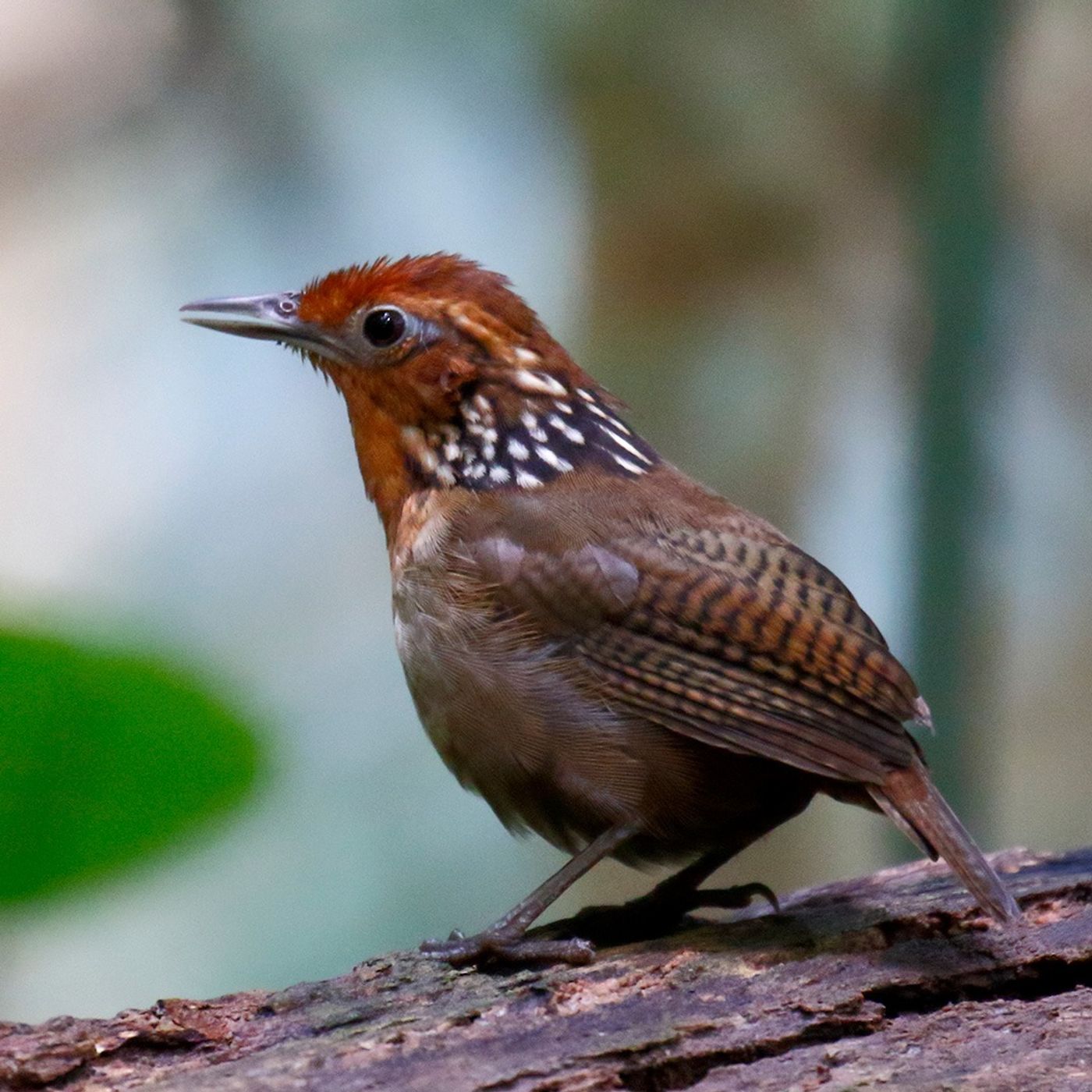 BirdNote DailyWrens from North to SouthThere are nearly ninety species of wrens in the world, and quite a few are exceptional singers. Nearly all of them reside in the Western Hemisphere, with the majority living in Central and South America. The White-bellied Wren ranks among the tiniest, at just under four inches, while the Giant Wren is nearly nine inches long—as big as a Red-winged Blackbird. And the most legendary singer? It’s a tough decision, but many would choose this Musician Wren from South America.More info and transcript at BirdNote.org. Want more BirdNote? Subscribe to our weekly ne...2023-01-0101 min
BirdNote DailyWrens from North to SouthThere are nearly ninety species of wrens in the world, and quite a few are exceptional singers. Nearly all of them reside in the Western Hemisphere, with the majority living in Central and South America. The White-bellied Wren ranks among the tiniest, at just under four inches, while the Giant Wren is nearly nine inches long—as big as a Red-winged Blackbird. And the most legendary singer? It’s a tough decision, but many would choose this Musician Wren from South America.More info and transcript at BirdNote.org. Want more BirdNote? Subscribe to our weekly ne...2023-01-0101 min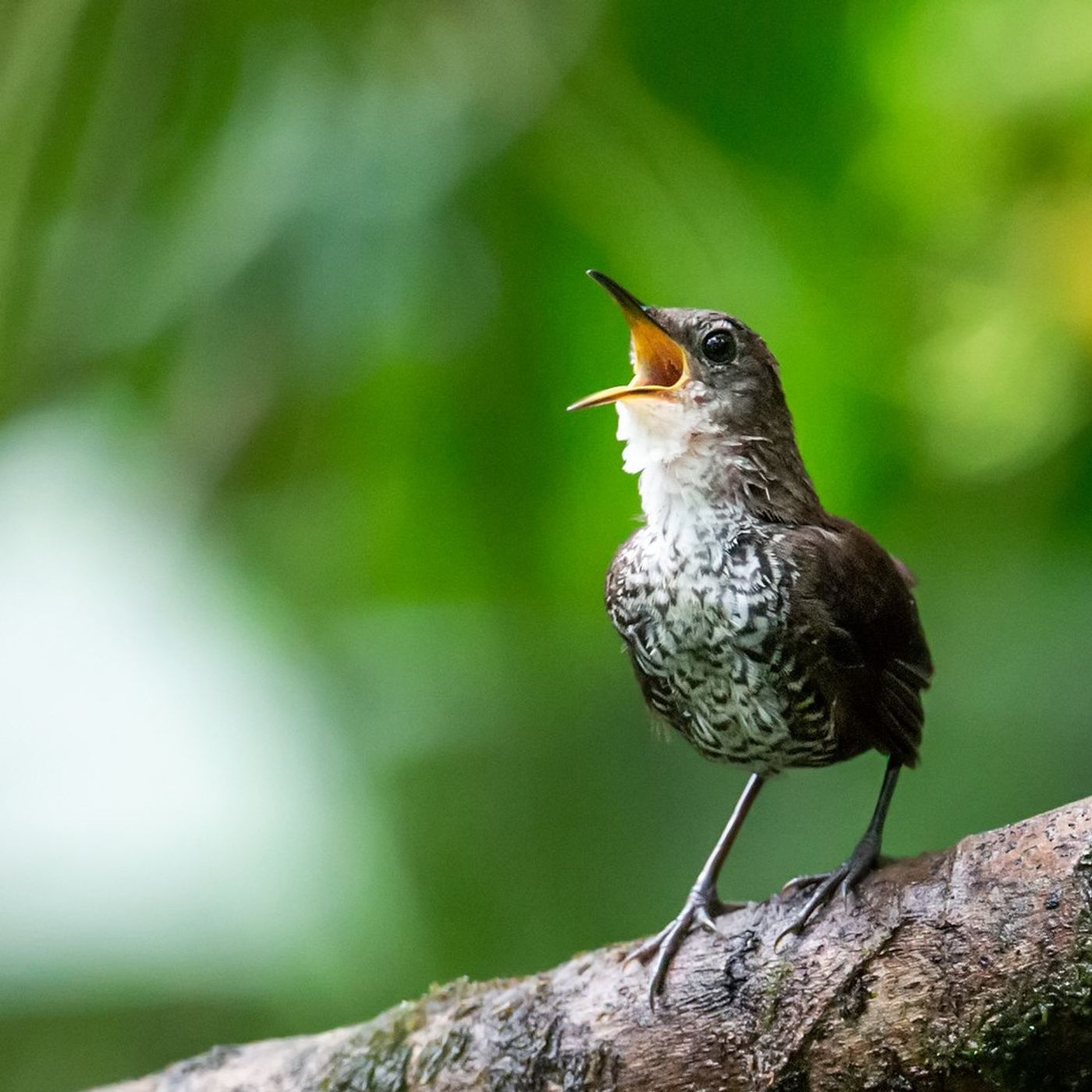 BirdNote DailyBirds Can Keep the BeatThe Scaly-breasted Wren lives in Central and South America, and has a lengthy song of whistled notes separated by pauses. By analyzing song recordings, researchers found that Scaly-breasted Wrens can precisely measure out pauses — even as they increase to several seconds. The findings suggest that the wrens have an internal metronome as accurate as a highly-trained musician playing a solo.More info and transcript at BirdNote.org. Want more BirdNote? Subscribe to our weekly newsletter. Sign up for BirdNote+ to get ad-free listening and other perks. BirdNote is a nonprofit. Your tax-deductible gift makes...2022-12-1401 min
BirdNote DailyBirds Can Keep the BeatThe Scaly-breasted Wren lives in Central and South America, and has a lengthy song of whistled notes separated by pauses. By analyzing song recordings, researchers found that Scaly-breasted Wrens can precisely measure out pauses — even as they increase to several seconds. The findings suggest that the wrens have an internal metronome as accurate as a highly-trained musician playing a solo.More info and transcript at BirdNote.org. Want more BirdNote? Subscribe to our weekly newsletter. Sign up for BirdNote+ to get ad-free listening and other perks. BirdNote is a nonprofit. Your tax-deductible gift makes...2022-12-1401 min BirdNote DailyStrange Places for a NestBirds are resourceful. Wherever they live, even in the biggest cities, they find clever places to build their nests. An initiative from the Cornell Lab of Ornithology called Celebrate Urban Birds, once asked people to share the funkiest and funniest places they’ve seen a bird nest. Among the highlights were a family of robins set up shop in a coiled cable hung near a welding rig, a wren nest in an old car motor, and a tiny hummingbird nest perched precariously on an outdoor string lightbulb.More info and transcript at BirdNote.org. Want mor...2022-12-0201 min
BirdNote DailyStrange Places for a NestBirds are resourceful. Wherever they live, even in the biggest cities, they find clever places to build their nests. An initiative from the Cornell Lab of Ornithology called Celebrate Urban Birds, once asked people to share the funkiest and funniest places they’ve seen a bird nest. Among the highlights were a family of robins set up shop in a coiled cable hung near a welding rig, a wren nest in an old car motor, and a tiny hummingbird nest perched precariously on an outdoor string lightbulb.More info and transcript at BirdNote.org. Want mor...2022-12-0201 min Living on EarthLiving on Earth: October 19, 2012Debate #2 and Energy / Exporting US Oil / Wyoming Coal / Science Note: Silk Saves Lives / How Insects Influence Plant Evolution / BirdNote: Pacific Wren / Disney's Commitment to the Circle of Life / America the Possible Learn more about your ad choices. Visit megaphone.fm/adchoices2012-10-1951 min
Living on EarthLiving on Earth: October 19, 2012Debate #2 and Energy / Exporting US Oil / Wyoming Coal / Science Note: Silk Saves Lives / How Insects Influence Plant Evolution / BirdNote: Pacific Wren / Disney's Commitment to the Circle of Life / America the Possible Learn more about your ad choices. Visit megaphone.fm/adchoices2012-10-1951 min